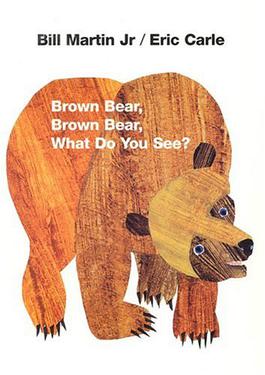Board Books: Touch and trace ABC; 1 Big Salad: A Delicious Counting Book; Brown Bear, Brown Bear, What Do You See; What the Ladybird Heard: A Push, Pull and Slide Book
Alphabet book
Touch and trace ABC (My First Home Learning) by Harriet Evans. Tiger Tales, August 2021. 26 pages, $8.99. 9781680106794.
Touch and trace ABC is a great way to teach children their ABCs and vocabulary. Colorful photographs and large, easy-to-read text fills each page. Each letter has an accompanying word that begins with the letter and a picture of the word. This combination makes it easy for children to learn to associate the words together. The words, letters, and images lie against colorful squares for organization and aesthetics. Since the book illustrates common food and animals, children can learn the name of the things around them. The book can also help children learn to write letters. Each letter has a dotted line, numbered strokes, and arrows showing which direction to move. Both the capitalized and lowercase letters are provided. Touch and Trace ABC is a great book to teach children letters and words. Children can build fine motor skills to write the words, too.
Counting book
1 Big Salad: A Delicious Counting Book by Juana Medina. Penguin Young Readers Group, June 2016. 32 pages, $17.99, 9781101999745.
Children learn to count from 1-10. Medina showcases photos of fruits and vegetables. She doodled over the images with simple line drawings and transformed the produce into adorable animals. The story starts with one avocado deer and ends with ten mandarin orange slice cats. Towards the end, the ingredients lose their doodles and become a bowl of salad. The last page has a dressing recipe to add to the salad. The font is large, making it easier for children to read. Medina also included numerals (1, 2, 3) and written numbers (one, two, three) to help children associate numerical symbols with their letter equivalents. The illustrations also facilitate reading. The large, delicious-looking photos and hilarious doodles are set against a white background, making the ingredients the primary focus. This book makes counting fun and introduces children to fruits and vegetables that they may not be familiar with. It is easy to understand and can be used to start a conversation about eating healthy.

Concept book
Brown Bear, Brown Bear, What Do You See? By Bill Martin. Henry Holt and Co. (BYR), April 2008. 32 pages, $17.99, 9780805017441.
This book teaches children about animals and colors. They learn about a green frog, a purple cat, a blue horse, and a yellow dog. The next follows a simple formula. Children see animals and comment on what other animals are looking at. Each animal makes a variation of the repeated pattern:
“Brown Bear, Brown Bear,
What do you see?
I see a red bird looking at me.
Red Bird, Red Bird,
What do you see?
I see a yellow duck looking at me.”
This repetition makes it easier for children to follow the story. The text is smaller than the illustrations, which makes it easier for readers to focus on the animals and colors. The animals are collaged, the shapes of the animals are geometric, and the colors are bold and flat. The animals are also placed against a white background, making it easier for children to identify the animal and their colors. Brown Bear, Brown Bear, What Do You See is a good story for children starting to learn words, animals, and colors.

Engineered book
What the Ladybird Heard: A Push, Pull and Slide Book by Julia Donaldson. Macmillan Children's Books, July 2022. 10 pages, $14.99, 9781529072532.
A quiet ladybird lives in a noisy farm yard. She never says a word. One day, she hears two men plotting to steal the prize cow. She gets the other animals to join her in a clever plan to stop the thieves. This story encourages interaction. The story has a push, pull, and slide mechanism on every spread so children can actively participate in the story reading process. The story is written in rhyme, alliteration, and repetition so children can join in saying repeated portions, including the noises animals make. This repetitive nature provides an easy-to-follow pattern, and the rhyming gives the story a natural flow. Children can learn about different concepts. They hear changing verbs like “ing” and “ed,” which helps expand their vocabulary. They are introduced to geography by having directional language presented in map form. The illustrations themselves are vibrant and portrayed in a collage style. Children will love spotting their glittery ladybird on each page. The story, repetitive nature, and images will appeal to many children.



Comments
Post a Comment